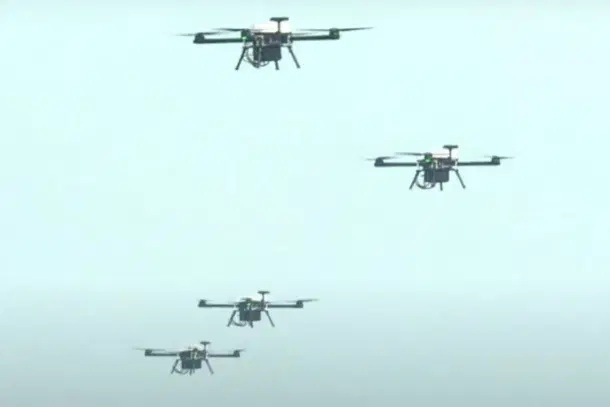News Brief
Army Plans Advanced Radars To Counter Drone Swarms Along Northern And Western Borders: Report
Arun Dhital
Sep 08, 2025, 05:23 PM | Updated 05:23 PM IST
Save & read from anywhere!
Bookmark stories for easy access on any device or the Swarajya app.


After Pakistan used swarms of surveillance and attack drones in Operation Sindoor, the Indian Army is set to strengthen its air surveillance network with advanced radars along the northern and western borders, The Indian Express reported.
The upcoming radar systems are built to detect, track, and engage aerial objects with a low radar cross-section (RCS), which are typically difficult to identify.
They will be integrated into the Army’s Akashteer air defence network, enabling battlefield commanders to respond more swiftly to hostile drones and other airborne threats.
Two separate Requests for Information (RFI) have been issued to procure up to 45 Low Level Light Weight Radars (Enhanced) (LLLR-E) and 48 Air Defence Fire Control Radar-Drone Detectors (ADFCR-DD).
The Army is also seeking 10 upgraded Low Level Light Weight Radars (LLLR-I) through a fresh RFP. These next-gen 3D AESA radars can cover a 50-km range and keep tabs on over 100 targets at once, offering a powerful boost to battlefield awareness.
The LLLR-E will be equipped with an Electro-Optical Tracking System (EOTS) and passive radio-frequency detection, allowing it to pick up signals from swarms of low-RCS drones and transmit targeting data to weapon systems up to 10 km away. It will also offer continuous, day-and-night tracking capability.
The ADFCR-DD will combine search radar, track radar, fire control systems, and Identification Friend-or-Foe (IFF) on a single vehicle. Designed to direct the fire of at least two L/70 or successor air defence guns, it will also provide targeting support for Very Short Range Air Defence Systems (VSHORADS).
The Army’s RFI highlights that during Operation Sindoor, Pakistan made extensive use of drone swarms to target both civilian and defence infrastructure. Existing air defence guns like the L/70, ZU 28, and Schilka proved highly effective in countering these threats.
However, the Army stressed that integrating these guns with advanced radars, capable of detecting, classifying, and directing weapon systems against even the smallest drones, would significantly enhance the effectiveness of neutralisation efforts.
Please click here to add Swarajya as your preferred and trusted news source on Google.





